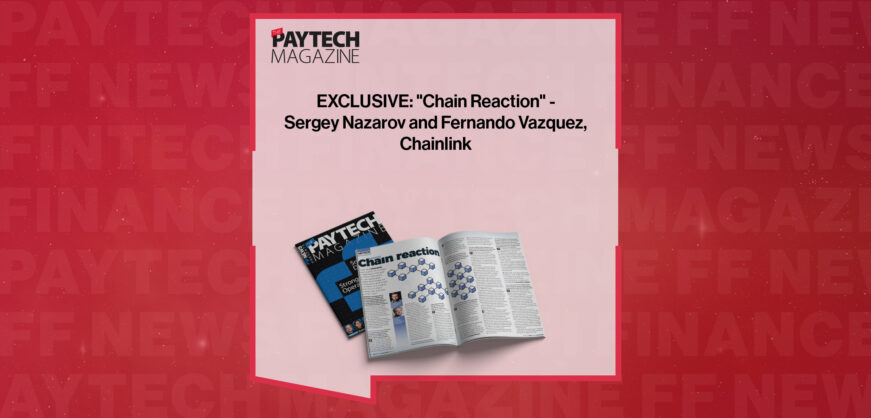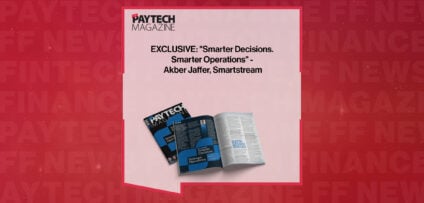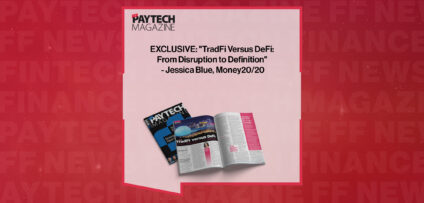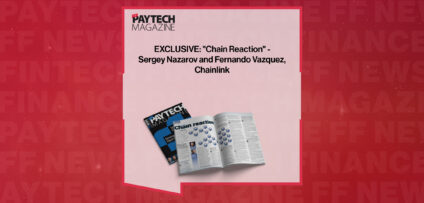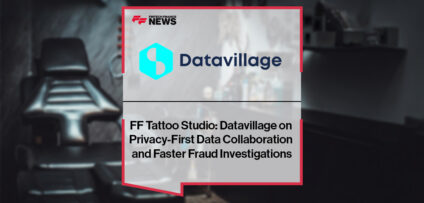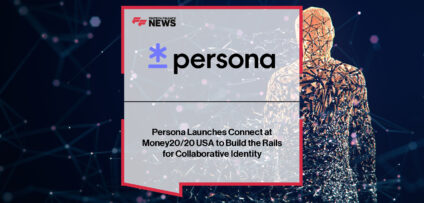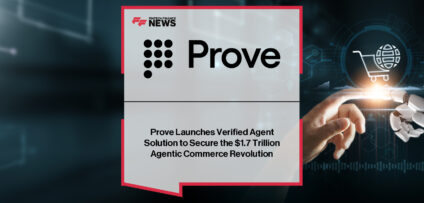Breaking News
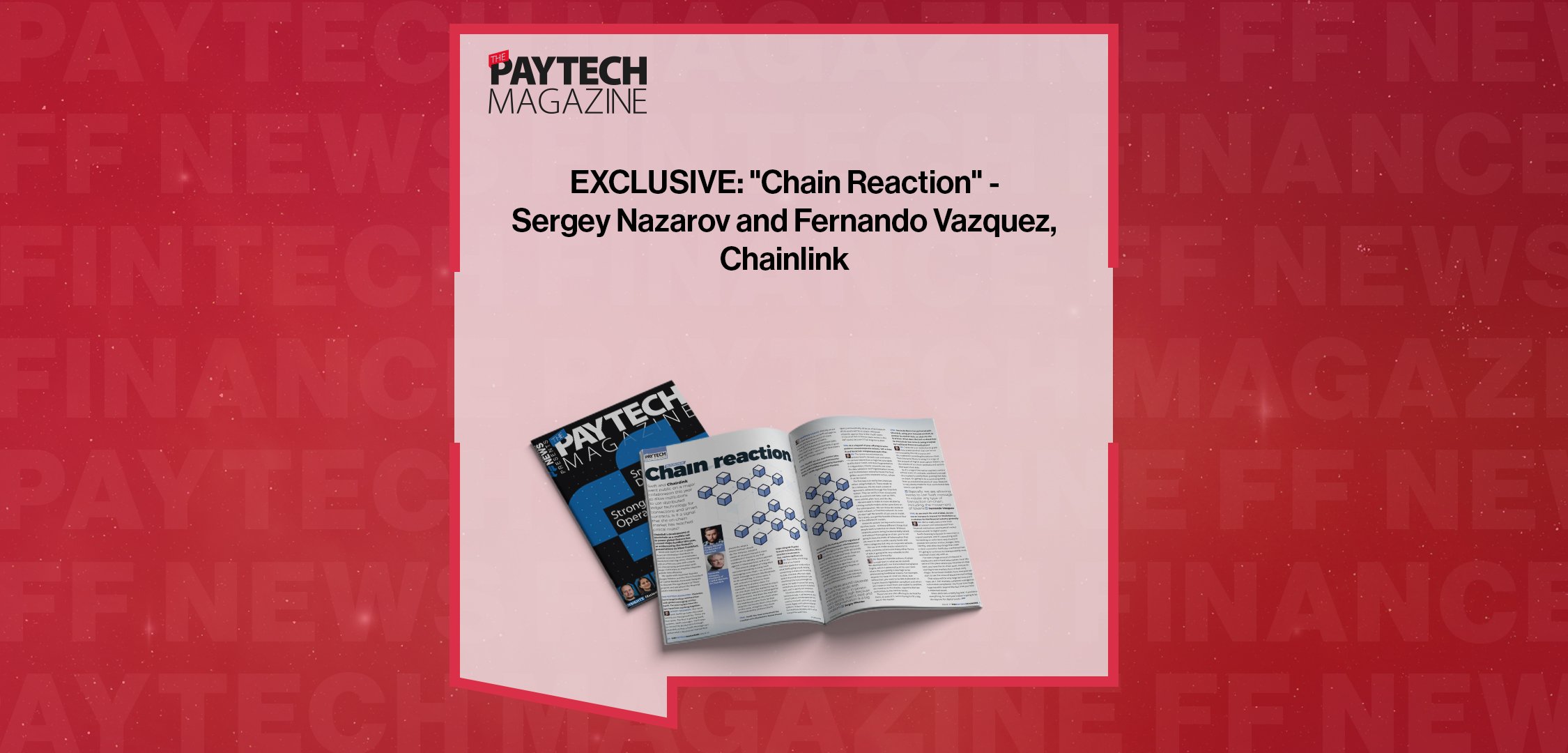
EXCLUSIVE: “Chain Reaction” – Sergey Nazarov and Fernando Vazquez, Chainlink in ‘The Paytech Magazine’
Swift and Chainlink went public on a major collaboration this year to allow institutions to use distributed ledger technology for transactions and smart contracts. Is it a signal that the on-chain market has reached critical mass?
Chainlink’s development of blockchain as a credible rail to power global finance has crossed major hurdles this year, as evidenced by the fintech’s presentations at Sibos Frankfurt. Work with Swift to use its global financial information standards to provide access to, from and between blockchains was big news, showcasing UBS as a first use case with a bank. It’s also pursuing partnerships with major institutions to improve corporate actions data efficiency.
We spoke with Chainlink founder Sergey Nazarov and the firm’s President of Capital Markets Fernando Vazquez to discover the significance of these projects and ask where the financial assets industry goes next.
THE PAYTECH MAGAZINE: Chainlink had a longstanding collaboration with global messaging service Swift. Can you explain how the two have been working together.
SERGEY NAZAROV: Our work with Swift has been focussed initially on interoperability. There are two types. The first is getting Swift systems, Swift messages, Swift keys to connect to blockchains through Chainlink, so that a Swift message can define what a blockchain transaction should do, what a smart contract should do. For instance, should it create an account? Should it move a stablecoin? Should it use that stablecoin for delivery, versus payment against a tokenised fund, and so on.
“The second category of integration and interoperability is using Swift messaging cross-chain – so, once the Swift message instructs the blockchain to do something. In many cases, it will instruct it to deliver or move something to another chain. For example, a stablecoin transaction starts on one chain, but the stablecoin has to go to another where it is exchanged for another asset. And then the asset will have to come back to the chain where the stablecoin came from. So that requires communication cross-chain, in this case, using the cross-chain interoperability protocol (CCIP).
TPM: Swift has now announced the creation of a blockchain-based shared ledger alongside 30 global financial institutions. What is Chainlink’s involvement in that, and how significant is it?
SN: There will be a lot of things that a true financial institution-grade chain needs, which is what Swift’s going to build, including connectivity to chains and connectivity to data. Chainlink is the most reliable system to provide that because it’s the one that all the institutions right now see as the leader in connectivity among institutions, connectivity to institutional data, and to identity and compliance.
Chainlink establishes standards for blockchain data. It will become an open set of systems and standards that are used by the Swift community to work across digital and traditional finance systems. It doesn’t have to replace the traditional systems, but it will be compatible with them.
FERNANDO VÁZQUEZ: Basically, we are allowing banks to use Swift messages to initiate any type of transaction on-chain, including the movement of tokens. The Chainlink Runtime Environment (CRE) allows Swift and the embedded banks to grow usage organically – which is why I think there’s going to be massive adoption.
TPM: The UBS use-case showcased at Sibos focussed on a tokenised smart contract for funds, with workflows governed by Chainlink’s Digital Transfer Agent technical standard. Will funds be the starting point for migration of traditional financial products onto blockchain?
SN: The Digital Transfer Agent Technical Standard is something I think will initially be used widely for tokenised funds. There are other use cases where you need transfer agents, such as equity, but for funds specifically, the transfer agent has a lot of control around what’s going to happen, or not happen, with the fund.
“Basically, we are allowing banks to use Swift messages to initiate any type of transaction on-chain, including the movement of tokens “
So it’s a good place to start. And there is also a lot of demand and current activity to generate tokenised funds. I think transfer agency will eventually all be on-chain because all the assets will be on-chain. Whatever a transfer agency does in the TradFi world, it’ll do all of that in the on-chain world, in the DeFi world, because it’ll all migrate to that.
TPM: AI is a big part of your offering to solve problems around corporate actions. Tell us how AI and blockchain complement each other.
SN: The issues around corporate actions have to do with cost and errors – in-person intervention is high because data quality doesn’t exist, and data fragmentation is a big problem. Oracle networks can solve the data validation and fragmentation issues, and the blockchain networks house the final golden record of the corporate action, where it can be shared.
The first step is to verify the corporate action using multiple AI. There needs to be a consensus; the AIs reach a level of agreement, achieved through the Chainlink system. They can verify it from structured data, or unstructured data, such as PDFs, news articles, plain text, and the like. We were able to make AI more reliable by running multiple models at the same time on the same question. We ran those AIs inside an oracle network, a Chainlink network. So now you don’t get the benefit of just one AI model for a query, you get the benefit of three or four or five different AI models.
Corporate actions are key events around equities, funds… all these different things that people want to tokenise on-chain. Without corporate actions being fundamentally solved and without them going on-chain, you’re not going to have the levels of tokenisation that you want to see in public equity funds and other categories that rely on corporate actions. The use of AI inside oracle networks to verify corporate actions and many other forms of data is going to be very valuable to the digital asset community.
FV: Beyond corporate actions, AI plays a major part in what we do overall. We developed ACE, our Automated Compliance Engine, which is powered by AI for use cases where the complexity is too high to be processed by traditional means. For example, anyone can issue an asset on-chain, but before that, you need to be MiCA (Markets in Crypto-Assets) regulation compliant and when you move an asset from one wallet to another, you need to do the checks, report to the tax
authorities, to the central banks. There’s no one else offering to do that for them, so with ACE, we’re trying to fill a big gap in the market.
TPM: Deutsche Borse has partnered with Chainlink, using your DataLink product, to publish its market data on-chain for the first time. What does that tell us about how far blockchain has come in being accepted by traditional financial institutions?
SN: DataLink is an institutional-grade data oracle product that can be run and owned by the data source and the institution providing the data on-chain. That Deutsche Borse is using it is a sign of the amount of digital asset option there is, and the volume of on-chain contracts and systems that want that data.
“The issues around corporate actions has to do with cost and errors – in-person intervention is high because data quality doesn’t exist and data fragmentation is a big problem “
So it’s a signal that we’ve reached a certain critical mass of contracts, and there’s enough of a market to justify them putting that data on chain. It’s going to be a continuing trend from an institutional point of view. DataLink is very clearly made for that institutional data source user group.
TPM: As we reach the end of 2025, do you see an increase in interest for blockchain as a solution for the financial industry generally?
SN: We’ve really seen a new level of interest and commitment from financial institutions and financial market infrastructures to digital assets. Swift choosing to launch its own chain is a good example, and it’s something we’ll be working on with them very closely to provide the various oracles, bridges, data, identity, and other key things that make a chain successful. Swift also mentioned that it’s going to continue its interoperability work, and that’s basically with us.
I’ve seen a huge amount of interest in stablecoins and in fund tokenisation. And I think we’re at this place where you have the on-chain cash, you have the on-chain asset, and you’re starting to see markets form in their early stages. Once those markets form, everyone will start to see the value of blockchain technology.
That value will be very large because you’ll have 24-7, 365 markets, collateral management, automated compliance. You’ll just have huge, huge benefits beyond the fact that you have a tokenised asset.
Sibos 2025 was a really big deal, it positioned everything. So next year’s Sibos is going to be the big one for digital assets.
This article was published in The Paytech Magazine Issue #17, Page 22-23
Companies In This Post
- Generative AI in Banking: From POCs to Front-Office Impact Read more
- EXCLUSIVE: “Chain Reaction” – Sergey Nazarov and Fernando Vazquez, Chainlink in ‘The Paytech Magazine’ Read more
- FF Tattoo Studio: Datavillage on Privacy-First Data Collaboration and Faster Fraud Investigations Read more
- Chancellor Unveils Plans to “Supercharge” Growth of Innovative Financial Services Firms Read more
- Standard Chartered Partners With Dandelion to Enhance Real-Time Cross-Border Payments Read more






